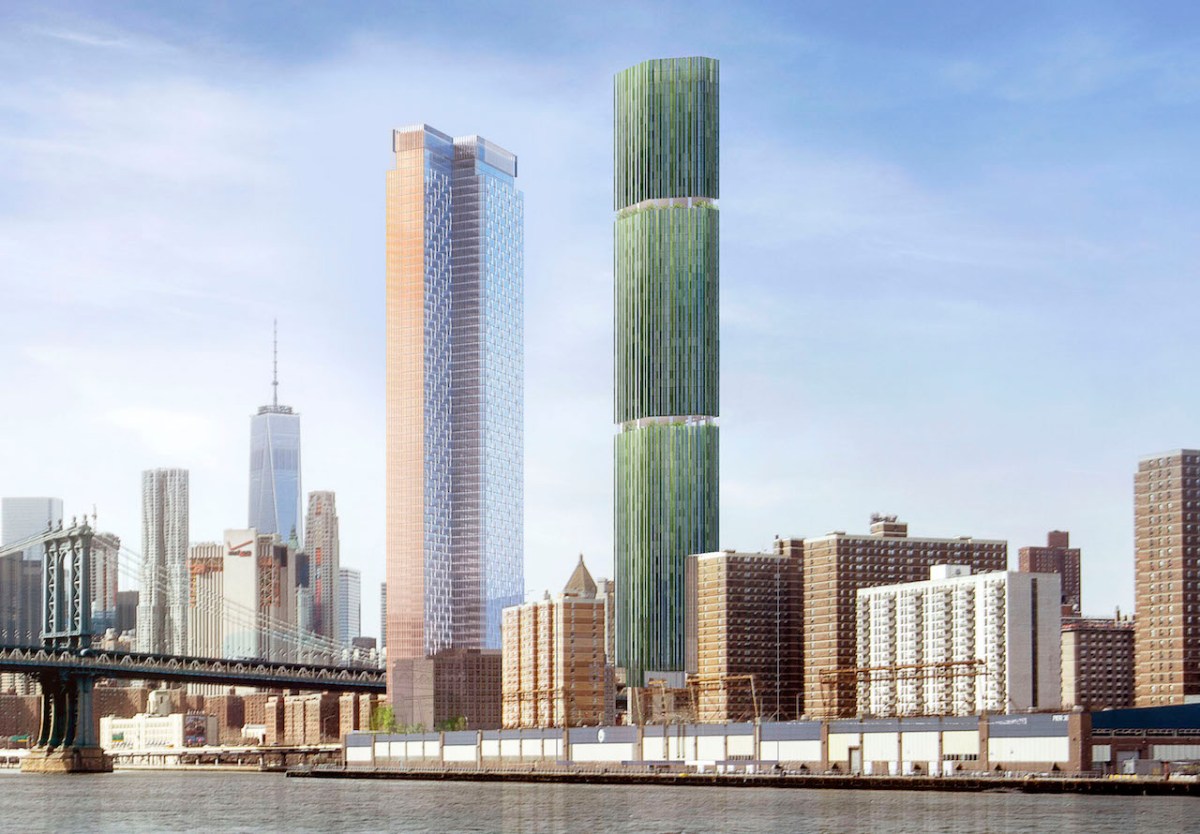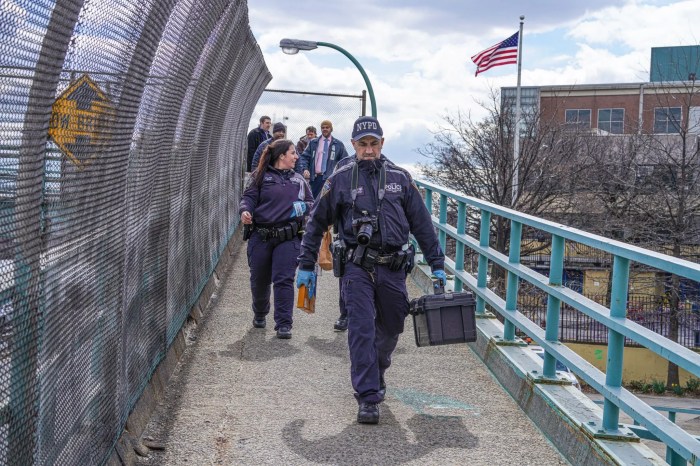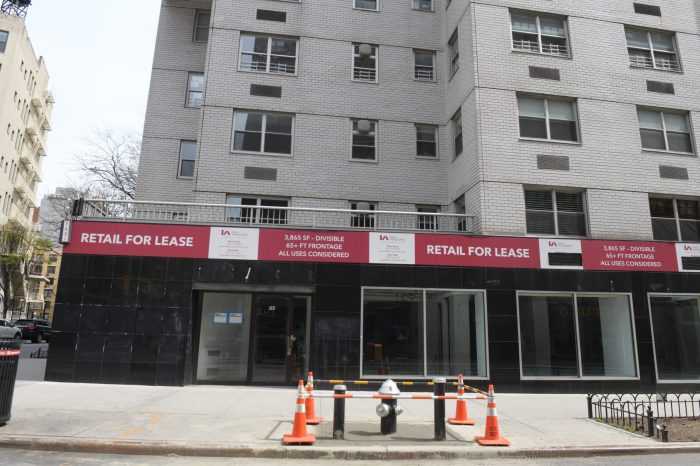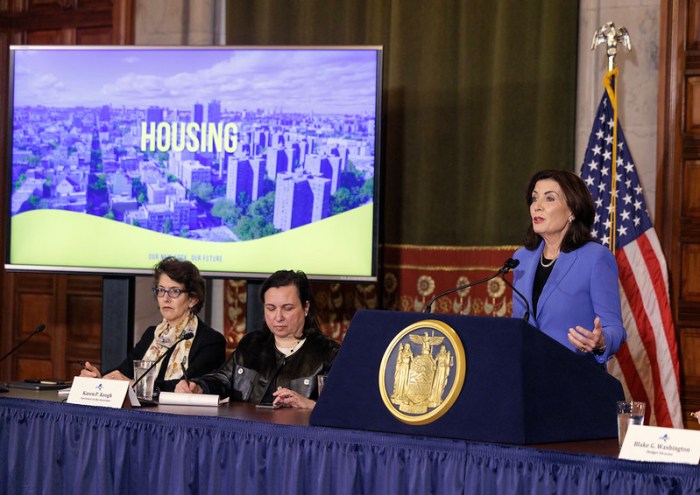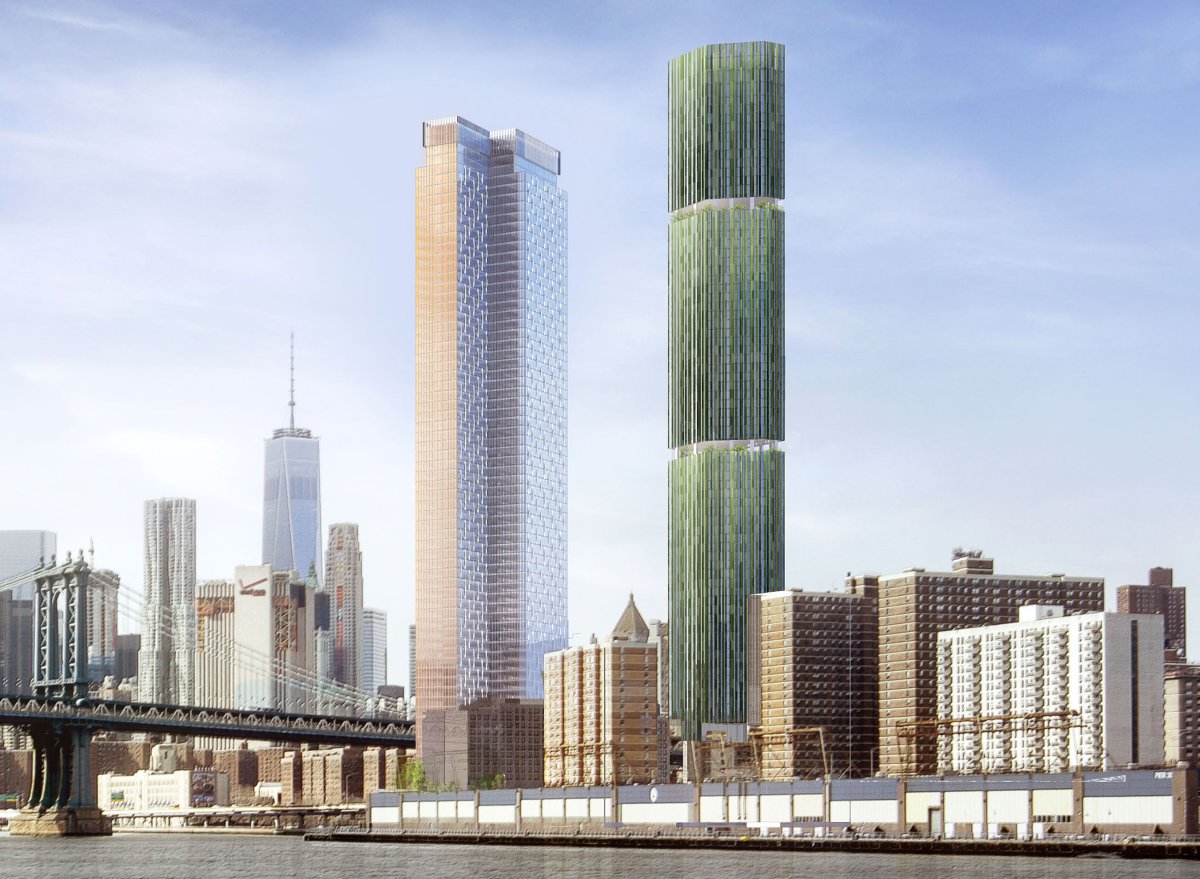
BY LEVAR ALONZO | A crowd of angry residents packed the community room at Two Bridges Towers, at 82 Rutgers Slip, for the Community Board 3 Land Use committee meeting to voice their opposition to developers building megatowers in their community.
About 100 residents and members of community activist groups Good Old Lower East Side (GOLES) and CAAAV Organizing Asian Communities packed the Oct. 18 meeting. Many held signs in English, Mandarin or Spanish, saying, “Stop the Division,” and “Stop The Racism, Pass the CWG Plan Now,” referring to the Chinatown Working Group rezoning plan.
The opponents presented a brief explanation on why C.B. 3 should sign on as a co-applicant on the C.W.G. plan. The community wants to rezone Chinatown and part of the Lower East Side to keep “supertall” towers out. The board’s support is also critical because it means the city would waive $50,000 in fees required for their request.
Another local group, TUFF-LES, is also part of the renewed push for the rezoning.
This move by the community prompted District 1 Councilmember Margaret Chin to join the meeting and offer her full support.
“After helping build up this community,” Chin said, “Two Bridges residents deserve the right to take back control and shape the future of their neighborhood.”
Christopher Marte, who is running against Chin on the Independence Party line in the Nov. 7 general election, and his supporters charged Chin’s support comes a bit too late.
“We have to take every opportunity we can to stop these developments,” Marte said. “So I’m in support of any lawsuits, community-based actions because these developments would change the fabric of our community.”
He said if he is the next city councilmember this matter would top his list of priorities.
“This issue is time-sensitive,” Marte stated, “and the reason why I continue to run is because of issues like this.”
Last week, Borough President Gale Brewer and Chin filed with the Department of City Planning to formally request a zoning text amendment to protect the neighborhood from out-of-scale market-rate development. The application is the first of this sort submitted solely by politicians in nearly 15 years.
“We are delivering on the promise we made to the Two Bridges community by using every tool at our disposal to make their voices heard,” Chin declared. “These out-of-scale buildings threaten to displace hard-working residents, bring forth irreversible environmental hazards and accelerate gentrification.”
The amendment drafted by Brewer and Chin would require a special permit for certain developments in the Two Bridges residential area. It would clarify that large, out-of-scale development proposals are not “minor modifications” to this area’s existing zoning and would require public review.
Community concerns flared in 2008 when the Bloomberg administration rezoned more than 100 blocks of the East Village and Lower East Side. Advocates feared large-scale development projects would be pushed to the south and into their enclaves. Their fears were brushed off, but eventually proven right: Construction on nearly half-a-dozen supertall skyscrapers is either underway or planned in the area. Extell is currently completing an 800-foot-tall tower at 227 Cherry St. that dwarfs the Manhattan Bridge below it.
Members of community groups said they are fighting to stop gentrification from overtaking their neighborhood.
“If we don’t stop these effects, then it will continue to trickle down into more of the Lower East Side,” one speaker warned the board.
The supertall opponents are using the 2014 Chinatown Working Group community-led plan as the basis for their request. The new effort does not involve the original plan in its entirety but a “subdistrict” of it. Under the C.W.G. proposal, new developments would be capped at 350 feet, with up to 55 percent guaranteed affordable housing and mandatory community space included.
“So, basically Walmart cannot come into this neighborhood without the community having its say first,” one activist explained.
Many residents spoke in support of the group’s presentation.
“I only know the buildings are getting higher and higher, impacting our lifestyle,” one Two Bridges area resident said. “My rent has raised from new developments.”
“I feel these megatowers and developers are making a profit off the lives and culture of this community,” another resident said before the committee voted.
But some committee members were skeptical of the community-based plan, viewing some parts of it as too ambitious.
One committee member initially said she was unsure about the request, calling parts of the plan “unrealistic” — yet she ultimately supported it.
“I’ve changed my mind!” Lisa Kaplan said. “I have real reservations about some parts of the proposal. But I think we have to negotiate with the city. The proposal on the floor is so outrageous and so out of scale that we have to sit down and be part of the discussion about this area.”
The committee voted unanimously in favor of supporting the community plan as a co-applicant. The full board, in turn, at its meeting on Nov. 1, is expected to support the committee’s recommendation.



